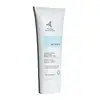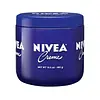What's inside
What's inside
 Key Ingredients
Key Ingredients

No key ingredients
 Benefits
Benefits

 Concerns
Concerns

 Ingredients Side-by-side
Ingredients Side-by-side

Water
Skin ConditioningCaprylic/Capric Triglyceride
MaskingCetearyl Alcohol
EmollientGlyceryl Stearate
EmollientPropylene Glycol
HumectantDimethicone
EmollientGlycerin
HumectantCetyl Palmitate
EmollientHypericum Perforatum Extract
AntimicrobialTriticum Vulgare Germ Oil
EmollientCaprylyl Glycol
EmollientPanthenol
Skin ConditioningPhragmites Karka Extract
Skin ConditioningAdansonia Digitata Seed Oil
EmollientLavandula Angustifolia Oil
MaskingPhenoxyethanol
PreservativeHypericum Perforatum Oil
EmollientSimmondsia Chinensis Seed Oil
EmollientPoria Cocos Extract
Skin ConditioningAcacia Seyal Gum Extract
HumectantCaprylhydroxamic Acid
Ceteareth-12
EmulsifyingSodium Hyaluronate
HumectantTocopheryl Acetate
AntioxidantPrunus Armeniaca Kernel Oil
MaskingCeteareth-20
CleansingAscorbyl Palmitate
AntioxidantTocopherol
AntioxidantEthylhexylglycerin
Skin ConditioningWater, Caprylic/Capric Triglyceride, Cetearyl Alcohol, Glyceryl Stearate, Propylene Glycol, Dimethicone, Glycerin, Cetyl Palmitate, Hypericum Perforatum Extract, Triticum Vulgare Germ Oil, Caprylyl Glycol, Panthenol, Phragmites Karka Extract, Adansonia Digitata Seed Oil, Lavandula Angustifolia Oil, Phenoxyethanol, Hypericum Perforatum Oil, Simmondsia Chinensis Seed Oil, Poria Cocos Extract, Acacia Seyal Gum Extract, Caprylhydroxamic Acid, Ceteareth-12, Sodium Hyaluronate, Tocopheryl Acetate, Prunus Armeniaca Kernel Oil, Ceteareth-20, Ascorbyl Palmitate, Tocopherol, Ethylhexylglycerin
 Reviews
Reviews

Ingredients Explained
These ingredients are found in both products.
Ingredients higher up in an ingredient list are typically present in a larger amount.
Glycerin is already naturally found in your skin. It helps moisturize and protect your skin.
A study from 2016 found glycerin to be more effective as a humectant than AHAs and hyaluronic acid.
As a humectant, it helps the skin stay hydrated by pulling moisture to your skin. The low molecular weight of glycerin allows it to pull moisture into the deeper layers of your skin.
Hydrated skin improves your skin barrier; Your skin barrier helps protect against irritants and bacteria.
Glycerin has also been found to have antimicrobial and antiviral properties. Due to these properties, glycerin is often used in wound and burn treatments.
In cosmetics, glycerin is usually derived from plants such as soybean or palm. However, it can also be sourced from animals, such as tallow or animal fat.
This ingredient is organic, colorless, odorless, and non-toxic.
Glycerin is the name for this ingredient in American English. British English uses Glycerol/Glycerine.
Learn more about GlycerinPanthenol is a common ingredient that helps hydrate and soothe the skin. It is found naturally in our skin and hair.
There are two forms of panthenol: D and L.
D-panthenol is also known as dexpanthenol. Most cosmetics use dexpanthenol or a mixture of D and L-panthenol.
Panthenol is famous due to its ability to go deeper into the skin's layers. Using this ingredient has numerous pros (and no cons):
Like hyaluronic acid, panthenol is a humectant. Humectants are able to bind and hold large amounts of water to keep skin hydrated.
This ingredient works well for wound healing. It works by increasing tissue in the wound and helps close open wounds.
Once oxidized, panthenol converts to pantothenic acid. Panthothenic acid is found in all living cells.
This ingredient is also referred to as pro-vitamin B5.
Learn more about PanthenolWater. It's the most common cosmetic ingredient of all. You'll usually see it at the top of ingredient lists, meaning that it makes up the largest part of the product.
So why is it so popular? Water most often acts as a solvent - this means that it helps dissolve other ingredients into the formulation.
You'll also recognize water as that liquid we all need to stay alive. If you see this, drink a glass of water. Stay hydrated!
Learn more about Water